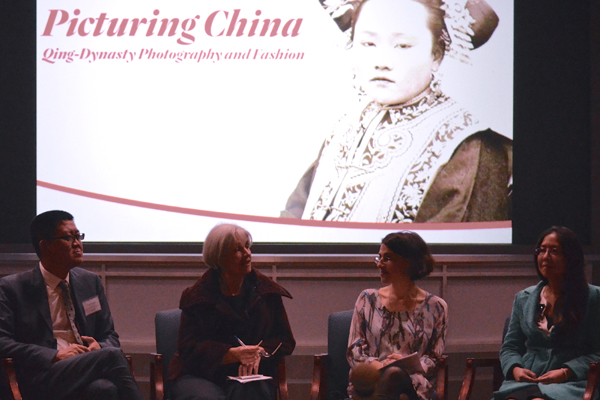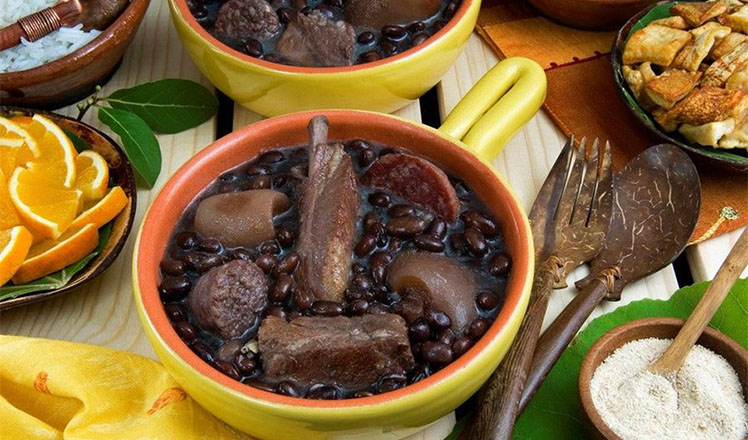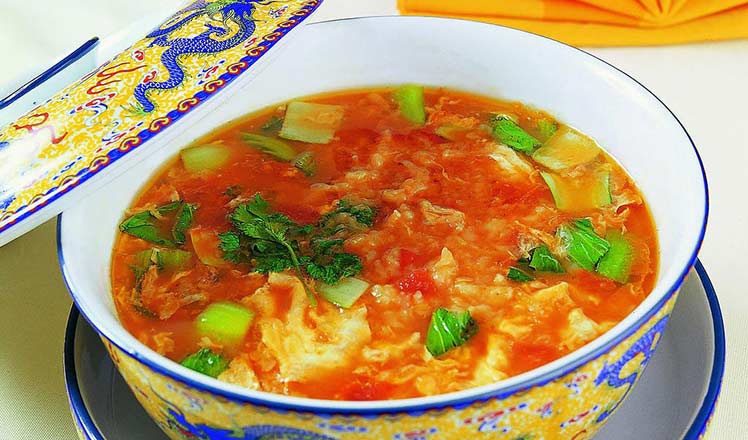Qing Dynasty fashions explored in photos
Updated: 2015-11-14 03:36
By HUA SHENGDUN in Washington(China Daily USA)
|
|||||||||
|
 |
|
From left: Bingxue Tong, a private collector who specializes in rare photographs; An-tonia Finnane, professor of history at the University of Melbourne; Rachel Silberstein, lecturer at the School of Art and Visual Culture at the Rhode Island School of Design; and Linda Welters, professor in the department of textiles, fashion merchandising and design at the University of Rhode Island discuss photography of the late Qing Dynasty, at George Washington University in Washington on Nov 7. [Photo/Pan Jialiang for China Daily] |
That point was made by John Wetenhall, director of the George Washington Univer-sity Museum and the Textile Museum, at an art symposium at George Washington University (GWU) on Nov 7 in Washington. A panel of international photography and textiles scholars gave presentations at the symposium.
“It is so vivid and direct to see how Chinese culture evolves and the beautiful tradi-tional clothes and accessories through pictures,” said Linda Welters, a professor at the department of textiles, fashion merchandising and design at the University of Rhode Island. “I was amazed by those pictures showing how the Chinese culture and the Manchu minority ethnic culture influenced the way people get dressed.”
The grand and dramatic court theatre frequently shows up in the earliest photos taken by foreign photographers during the Qing Dynasty (1644-1911). The settings and costumes reflect the social conventions and political agenda of the rulers at that time, according to Liana Chen, assistant professor of Chinese language and literature at GWU.
For example, Qing Empress Dowager Cixi’s portrait photos illustrate how the rulers glorify their images through the theatre. In the picture, Cixi was dressed like the god-dess of compassion in Chinese Buddhism, surrounded by lotus.
“Cixi intended to use the image to establish a powerful yet benevolent impression to the people facilitating her political propaganda,” Chen said.
What also intrigued the scholars about the photograph was how it depicted daily life in China, said Bingxue Tong, a private collector who specializes in rare photographs taken by studios in China between the mid-19th century to the founding of the People’s Republic of China.
Tong said the photographs show people from different social classes and landscapes over China at a time when photographers started to get paid to take photos. There were studios set up in Shanghai, Beijing and Guangzhou.
“At that time, people were into role-play in pictures, and they would love to dress like an English lady or a French princess,” Tong said.
The symposium also commemorates John Thomson, a Scottish photographer and one of the few foreign photographers of the Qing Dynasty, who has had a lasting influence on Chinese photography.
“Traveling through the Qing Empire in the years of 1868-1872, John Thomson cre-ated on film a remarkable record of dress and deportment at a particular moment in Chinese history,” said Antonia Finnane, professor of history at the University of Mel-bourne.
“A closer look at Thomson’s photographs reveals the fact that a Manchu woman’s headdress might make her ethnic category plain to the beholder, but the width of the sleeves of her gown showed her attitude toward Han fashions,” said Finnane, who has studied the differences between Manchu and Han dresses.
Thomson’s pictures are on exhibit in the George Washington Museum, the first stop in the US of an international tour for the photographs.
Pan Jialiang in Washington contributed to this story.
- Valletta summit enhances political will to solve migration crisis amid concerns about EU consolidation
- S Korean court upholds life sentence for ferry captain
- China, US prepare for dialogue to fight cybercrime
- Myanmar's opposition to independently form government
- Obama signs executive order on lifting sanctions against Liberia
- Reputed New York mobster, 80, cleared in 1978 'Goodfellas' heist

 Top 10 regions that led the shopping spree on Singles Day
Top 10 regions that led the shopping spree on Singles Day
 Traditional Yuju Opera faces dilemma
Traditional Yuju Opera faces dilemma
 Eat more beans, peas, lentils and chickpeas, UN says
Eat more beans, peas, lentils and chickpeas, UN says
 Veterans Day marked across the United States
Veterans Day marked across the United States
 Antalya: Beautiful place where G20 will be held
Antalya: Beautiful place where G20 will be held
 Interesting trends revealed by Singles Day
Interesting trends revealed by Singles Day
 10 delicious soups you can't miss in cold winter days
10 delicious soups you can't miss in cold winter days
 Xi-Ma meeting lauded in US
Xi-Ma meeting lauded in US
Most Viewed
Editor's Picks

|

|

|

|

|

|
Today's Top News
Obama, Netanyahu at White House seek to mend US-Israel ties
China, not Canada, is top US trade partner
Tu first Chinese to win Nobel Prize in Medicine
Huntsman says Sino-US relationship needs common goals
Xi pledges $2 billion to help developing countries
Young people from US look forward to Xi's state visit: Survey
US to accept more refugees than planned
Li calls on State-owned firms to tap more global markets
US Weekly

|

|








